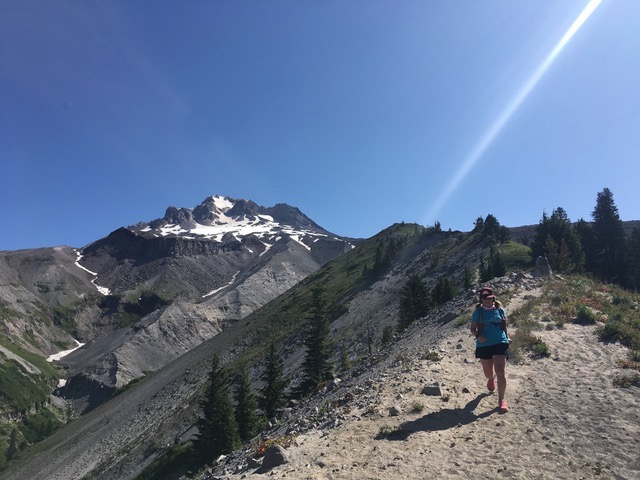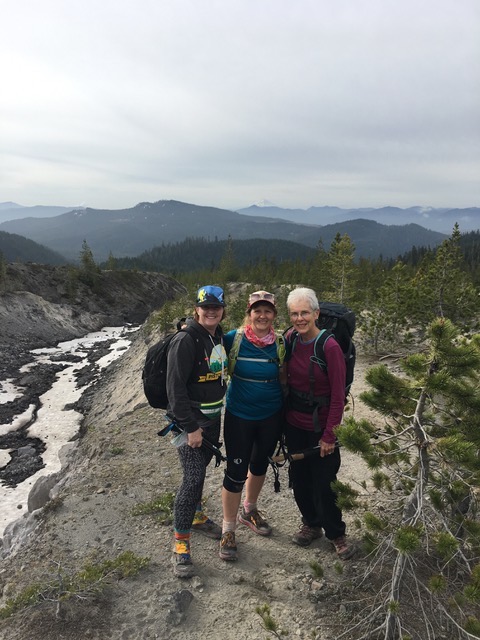Main Menu
Perimenopause: What is it?

Amanda is a naturopathic doctor based in Gisborne, New Zealand. Her work jam is women’s endocrine regulation, particularly as it pertains to trail-running & endurance medicine. She loves to teach groups of women who want to understand their bodies and optimize their function. Amanda believes in the healing power of nature and thus gives every patient a “Nature Rx” as part of a comprehensive treatment plan. Outside work, she hits the trails before sunrise, stays warm in a rainbow terry cloth tracksuit, and is raising 2 half-Kiwi kids with her Kiwi husband. Visit Amanda’s website: https://www.roe.co.nz/
Share This Article!


By: Amanda Roe
I have typed the word perimenopause into my phone hundreds of times by now, and it still does not autocorrect or summon predictive text. Does my phone know something I don’t? My phone seems to shrug its little shoulders as if to suggest I am typing some nonsense that I should just forget about.
I’d love to ignore perimenopause, but it doesn’t work that way in the human body. It starts as early as 35, setting us on a strange trajectory of ebbing and flowing physiological states. Perimenopause overlaps with an established monthly flux, with little to guide us except the experience of other people who have gone through what we’re going through.
It’s one of those things that you can kind of see coming, but no one truly prepares you for the changes that lie ahead. I think it’s especially noticeable in athletes. Clocking slower (in some cases MUCH slower) times, feeling a heaviness, being heavier, working much harder to ignite motivation—–these are just some of the effects we feel in perimenopause. It settles in, adjusting all the knobs and buttons to different settings in a time span that feels like overnight.
Metabolically, we’re different. We spend so much time as athletes, particularly in endurance sports, fine-tuning our sleep, nutrition, and digestion, only to have much of our know-how thrown out the window. Perimenopause is a phase of life. On average, people notice symptoms for about 5-7 years. For some people, it’s even longer. It is worth knowing what’s going on, what to expect, and how to adjust your sails through this transition. They call it “reverse puberty” for good reason.
In the beginning stages (usually late 30’s to early 40’s), progesterone (the calming, anti-spasmodic, anti-inflammatory hormone) decreases. Estrogen production is unchanged, but this presents with symptoms of estrogen dominance. Most people report heavier periods that come closer together. A few years into the transition (mid 40’s to early 50s), the ovaries quiet all the way down and estrogen production declines. The periods then space apart, or even start to skip. This is when people notice the more classic symptoms like hot flashes. Estrogen decreases until much less is produced and the symptoms settle down for good. Menopause is defined as “12 months of no period in a row” (without a determined medical reason). It is a date on the calendar (like your birthday). After this, you are considered to be in post-menopause.

Most of the changes that occur in perimenopause affect more than one system, and that’s because there are hormone receptors so many places in our bodies. When you think about it that way, it starts to make more sense.
Fatigue:
- Heavy periods: In perimenopause we ovulate less frequently. You have to ovulate to produce progesterone (which balances out the estrogen). If the ratio of estrogen to progesterone becomes too high, it can lead to heavier periods that come more frequently. Heavier periods can leave some people anemic. Frequent periods can also contribute to anemia. Frequent, heavy periods almost always lead to anemia. If this is happening, get your practitioner to run bloodwork. (Important note: if you reach your menopause date and then start bleeding again, you need to see a doctor. It is not normal to resume bleeding after 12 months of not bleeding)
- Thyroid issues: It’s not uncommon for the thyroid to down-regulate in perimenopause. If you feel fatigued more than what is typical for you, get your thyroid checked.
- Insomnia: this is a no-brainer for feeling fatigued, and it won’t correct itself without some kind of intervention. Getting to bed earlier, exercising when you have adequate energy to do so (versus when you are utterly exhausted), and seeing if your doctor may be able to provide meds or supplements to support regular sleep are some ideas.
Body Composition changes:
Unfortunately, there are some odds stacked against us in the body composition department. After age 30, muscle mass declines 3-8% per decade, with an increase in rate after age 60. That means “use it or lose it”. When estrogen starts to decrease in our late 30’s to early 40’s, our ability to process carbs shifts. We become more insulin resistant (prone to diabetes), and muscle mass decreases, while visceral (abdominal) adipose tissue can increase. This does not mean to never eat carbs. If you’re active, you still need them to fuel your workouts, you may not need as many. A good rule of thumb is to try and pick snacks that also include fat and protein. The great news is that our muscles respond to stimulus and can be built up, even with less estrogen onboard. Increased muscle mass also fortifies our bones and decreases osteoporosis and fracture risk later in life. Weight-bearing exercise becomes much more important: bodyweight exercises and heavy lifting should be two of your new running buddies if they aren’t already.
Skin and vaginal changes:
As hormones shift, so does the texture of our skin and hair. In the beginning, this can look like increased acne. As estrogen decreases so does our skin elasticity, and by that I mean skin everywhere. Vaginal tearing, vaginal dryness, pain with sex, slower wound healing, and overall skin dryness are all related to this hormonal shift. Whatever you use to keep your skin from chafing while running and hiking (especially the tender skin around the vulva, vagina and anus) will need to be on-point. It is fairly common for UTIs to pick up a bit in response to the hormonal skin change. Protect your bits, ladies.
Mood changes:
Anxiety and depression are extremely common in perimenopause, partially due to the decrease in progesterone (it’s calming for our brain). It seems to also be partially due to the fluctuations in estrogen, which can cause larger swings in blood sugar. It is much more likely to occur if someone has had issues with anxiety and/or depression previously. There are many ways to address this. Working with a coach or counselor in conjunction with your doctor, or working with an integrative practitioner who can address underlying hormonal and neurotransmitter issues are good places to start.
Cardiovascular effects:
The main one here is hot flashes. Fluctuations in hormones and compounds in the brain, along with a progressive reset of the internal thermostat can lead to a hot flash trigger. Decreasing alcohol, caffeine and sugar appears to have a positive effect on reducing hot flashes. Stopping smoking at least 5 years prior to the onset of hot flashes helps quite a bit. Being active prior to hot flashes and continuing to be active during the perimenopause period also appears to decrease the frequency and intensity of hot flashes, compared to sedentary counterparts.

Hypertension can also become an issue with less estrogen in the system (estrogen is protective in the blood vessels). Getting your cardio capacity stronger prior to menopause is important.
Those are the most common changes that people notice. Other body changes that we can see in perimenopause are:
- Pelvic pain
- Hair loss
- Dental changes
- Eye dryness
- Constipation
- Brain fog/memory issues
Something else worth noting is that if you are taking birth control or using any type of hormonal contraception (even for non-birth control reasons), you may not notice this shift in the same pronounced way. Many people ask, “How will I know if I’m in perimenopause then?” Sometimes, you won’t know because the hormones in the contraception mask the symptoms. Some people will note spotting during the month, breakthrough hot flashes, insomnia and mood changes. It is best to have a conversation with your prescribing provider to determine when and if you need to discontinue hormones.
Another question I often get is, “What if I my doctor wants me to get a hysterectomy? Will I go into menopause right away?” It depends on whether your ovaries are left in or not. If they are left intact, then the course for your perimenopause will be similar, but without the heavy bleeding and irregular periods. The other changes described above may still happen. If the ovaries are removed with the uterus, that will trigger immediate menopause. Most people will be offered the option of hormone replacement therapy to manage the symptoms, but again this is a conversation to have with your provider based on age, risk and severity of symptoms.
Perimenopause is kind of a long, strange trip for most people. If you have ovaries, it’s coming your way at some point. Much like a grand adventure, it’s good to be prepared. Below you will find some helpful links to connect with a provider who can help you navigate the ups and downs of your changing body and keep you on the trails for years to come!
North America: https://portal.menopause.org/NAMS/NAMS/Directory/Menopause-Practitioner.aspx
Australia/New Zealand: https://www.menopause.org.au/
Telemedicine: https://gennev.com/
My Clinic: https://functionalagain.com/womens-health (if you want to contact me directly)
Citation
Volpi E, Nazemi R, Fujita S. Muscle tissue changes with aging. Curr Opin Clin Nutr Metab Care. 2004;7(4):405-410. doi:10.1097/01.mco.0000134362.76653.b2
Thompson B, Almarjawi A, Sculley D, Janse de Jonge X. The Effect of the Menstrual Cycle and Oral Contraceptives on Acute Responses and Chronic Adaptations to Resistance Training: A Systematic Review of the Literature. Sports Med. 2020
Knowles OE, Aisbett B, Main LC, Drinkwater EJ, Orellana L, Lamon S. Resistance Training and Skeletal Muscle Protein Metabolism in Eumenorrheic Females: Implications for Researchers and Practitioners. Sports Med. 2019
Costello, J.T.; Bieuzen, F.; Bleakley, C.M. Where are all the female participants in Sports and Exercise Medicine research? Eur. J. Sport Sci. 2014, 14, 847–851.
Emmonds, S.; Heyward, O.; Jones, B. The Challenge of Applying and Undertaking Research in Female Sport. Sports Med. Open 2019, 5, 1–4.
Bondarev, Dmitriy MSc1; Laakkonen, Eija K. PhD1; Finni, Taija PhD2; Kokko, Katja PhD1; Kujala, Urho M. PhD3; Aukee, Pauliina PhD4; Kovanen, Vuokko PhD1; Sipilä, Sarianna PhD1 Physical performance in relation to menopause status and physical activity, Menopause: December 2018 – Volume 25 – Issue 12 – p 1432-1441
Pöllänen E, Ronkainen PHA, Horttanainen M, et al. Effects of combined hormone replacement therapy or its effective agents on the IGF-1 pathway in skeletal muscle. Growth Horm IGF Res 2010; 20:372–379.
Ko SH, Kim HS. Menopause-Associated Lipid Metabolic Disorders and Foods Beneficial for Postmenopausal Women. Nutrients. 2020;12(1):202. Published 2020 Jan 13. doi:10.3390/nu12010202
Gibson C, Matthews K, Thurston R. Daily physical activity and hot flashes in the Study of Women’s Health Across the Nation (SWAN) Flashes Study. Fertil Steril. 2014;101(4):1110-1116. doi:10.1016/j.fertnstert.2013.12.029
Smith RL, Gallicchio L, Miller SR, Zacur HA, Flaws JA. Risk Factors for Extended Duration and Timing of Peak Severity of Hot Flashes. PLoS One. 2016;11(5):e0155079. Published 2016 May 5. doi:10.1371/journal.pone.0155079
About the Author

Amanda is a naturopathic doctor based in Gisborne, New Zealand. Her work jam is women’s endocrine regulation, particularly as it pertains to trail-running & endurance medicine. She loves to teach groups of women who want to understand their bodies and optimize their function. Amanda believes in the healing power of nature and thus gives every patient a “Nature Rx” as part of a comprehensive treatment plan. Outside work, she hits the trails before sunrise, stays warm in a rainbow terry cloth tracksuit, and is raising 2 half-Kiwi kids with her Kiwi husband. Visit Amanda’s website: https://www.roe.co.nz/
Share This Article!













One Response
Thank you! It’s great to see articles on this topic, especially for the running/endurance community, as so little relevant information seems to be available.